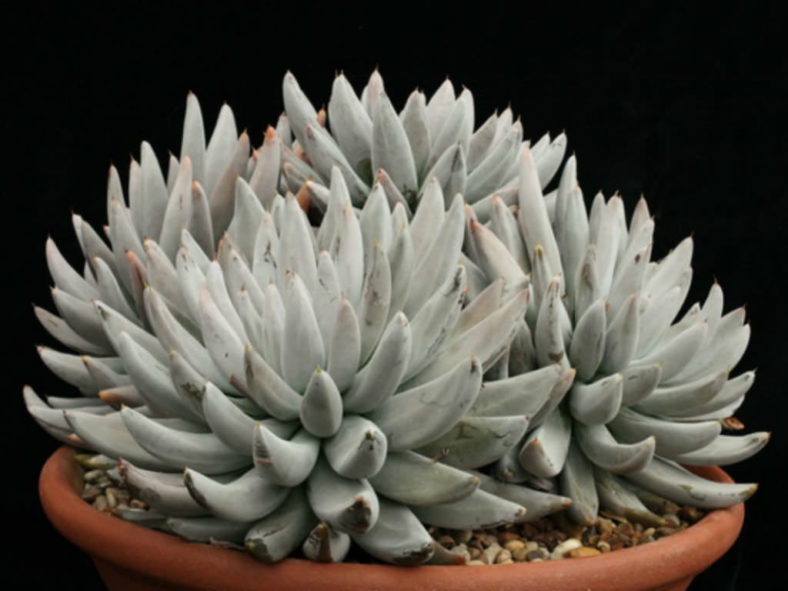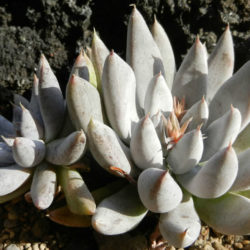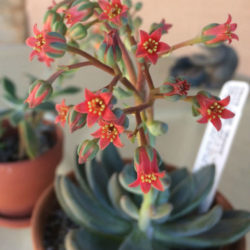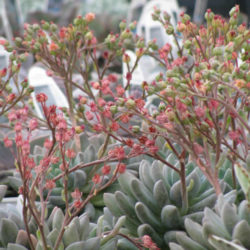Scientific Name
Echeveria tolimanensis Matuda
Synonym(s)
Echeveria 'Haagal' Echeveria haagai 'Tolimanensis'
Scientific Classification
Family: Crassulaceae
Subfamily: Sempervivoideae
Tribe: Sedeae
Genus: Echeveria
Description
Echeveria tolimanensis is a unique succulent that forms a short-stemmed, usually solitary rosette of powdery, dark green to yellowish-green or somewhat purplish leaves. The rosette can reach up to 8 inches (20 cm) in diameter. The leaves are fleshy, curved, almost cylindrical, and tend to drop easily. They are up to 3.6 inches (9 cm) long, 0.9 inches (2.2 cm) wide, and 0.5 inches (1.2 cm) thick.
Flowers are bell-shaped, coral red, more yellow towards the apex, and appear on tall, arcing stalks in summer.
Origin
Echeveria tolimanensis is native to Mexico (Hidalgo, Queretaro, and Tamaulipas).

Hardiness
USDA hardiness zone 8b to 11b: from 15 °F (−9.4 °C) to 50 °F (+10 °C).
How to Grow and Care
Most common Echeveria species are not complicated succulents to grow, provided you follow a few basic rules. First, be careful never to let water sit in the rosette as it can cause rot or fungal diseases that will kill the plant. Additionally, remove dead leaves from the bottom of the plant as it grows. These dead leaves provide a haven for pests, and Echeverias are susceptible to mealy bugs. As with all succulents, careful watering habits and plenty of light will help ensure success.
Repot as needed, preferably during the warm season. To repot a succulent, ensure the soil is dry before repotting, then gently remove the pot. Knock away the old soil from the roots, removing any rotted or dead roots. Treat any cuts with a fungicide. Place the plant in its new pot and backfill it with potting soil, spreading the roots out as you repot. Leave the plant dry for a week or so, then begin to water lightly to reduce the risk of root rot.
See more at How to Grow and Care for Echeveria.
Links
- Back to genus Echeveria
- Succupedia: Browse succulents by Scientific Name, Common Name, Genus, Family, USDA Hardiness Zone, Origin, or cacti by Genus
Photo Gallery
Click on a photo to see a larger version.


